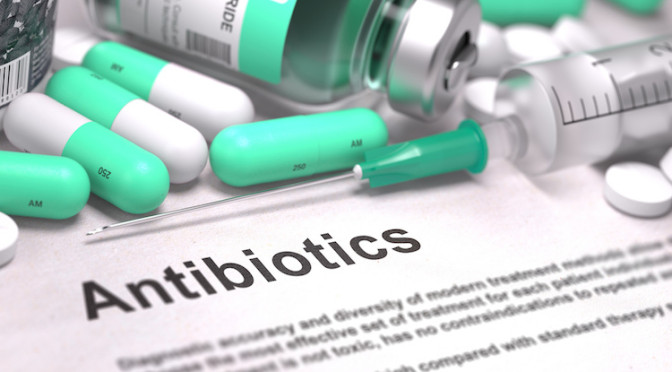Lack of knowledge on cancer is worrying in Africa. This was clear in a meeting that was held in South Africa which showed many African residents are in the dark about causes of the disease.
Many people still lack information about the causes of cancer and its treatment, in spite of the campaigns aimed at bringing more attention to the disease.
Participants in the conference were told that myths about cancer instill fear in people, who hesitate to seek treatment.
The moderator of the meeting, a nurse and is a cancerous tumour survivor, who is also an anti-cancer crusader in Africa, said many people shy away from seeking early treatment. She said knowledge about the disease is scant at the grassroots because of limited access of information.
"Wrong information is negating the war on cancer. The meeting revealed shocking details," she said.
Some of the shocking details include:
»» A man and his wife said they had been avoiding intimacy because they fear cervical cancer. A husband in his 40s had been told by his wife that she had heard from other women that engaging in sexual activity frequently increases chances of getting cervical cancer.
»» Young mothers at the meeting said they feared undergoing tests because they had been told that cervical cancer victims cannot conceive.
»» A man said he might be suffering from stomach cancer because he had lost his appetite for food.
»» It was also revealed that many men fear going for prostate cancer tests out of fear that they would become sterile after treatment.
...just to mention but a few. Here is enough true information about cancer you need to know. Never be fooled and mislead again by un-informed village dwellers.
Cancer is a disease in which abnormal cells grow, divide, and spread, often forming a mass called a tumor. Although any abnormal growth is a tumor, some tumors are benign (bih-NYN) (not cancer) and some are malignant (muhLIG-nuhnt) (cancer). Cancers may invade nearby tissues and metastasize (muh-TASS-tuh-syz), or spread to other parts of the body. Cancer can develop in almost any part of the body. In two types of cancer, leukemia (loo-KEE-mee-uh) and lymphoma (lim-FOH-muh), tumors do not form. Instead, cancer cells spread throughout the blood and the immune system, respectively.
Even if you haven’t been diagnosed with cancer, it is important to know that there are steps you can take to:
«» Reduce your chances of getting cancer.
«» Detect cancer early.
«» Make sure you get the treatment you need.
What causes cancer?
A number of factors may affect your cancer risk—your chances of developing cancer in your lifetime. Your family history, personal history, and environment all play a part. Some risk factors are beyond your control, such as age and family history. But you can change some aspects of your behavior or environment to reduce your risk. Keep in mind that most women with these risk factors will never have cancer.
Inherited risk.
Inherited genetic mutations, on their own, cause very few cancers. Several common types of cancer tend to run in families. These include breast cancer, ovarian cancer, colon cancer, melanoma (me-luh-NOH-muh), and lung cancer. However, environment and behavior also affect the development of these cancers.
If you have a family history of a certain type of cancer, it does not mean that you will develop that disease. Talk to your doctor about cancer in your family. You may need to take steps to reduce your risk or be screened more often or at an earlier age.
Tobacco use
Tobacco use is one of the leading causes of cancer. It increases the risk of cancers of the lung, larynx, mouth, nose, pharynx, esophagus, pancreas, kidney, bladder, liver, cervix, and stomach. Tobacco use causes 30 percent of all cancer deaths and 87 percent of lung cancer deaths in the United States.
Smoking not only causes cancer in smokers, but also may raise the risk of lung cancer for nonsmokers who breathe in secondhand smoke.
You can reduce your risk of lung cancer and other cancers by not smoking or using other tobacco products. You should also avoid secondhand smoke. If you currently smoke, quitting can lower your risk of cancer.
Age
Age is the most important risk factor for cancer. Most cancers—77 percent— occur in persons who are 55 years old or older. For this reason, you will need more tests and checkups to detect early signs of cancer as you get older.
Excessive alcohol intake
Drinking alcohol is a risk factor in cancers of the mouth, pharynx, esophagus, larynx, and liver. It may increase your risk of breast, colon, and rectal cancers. When drinking alcohol is combined with tobacco use, the risks of mouth, pharyngeal, and esophageal cancers are further increased. However, low or moderate alcohol intake may lower your risk of heart disease.
You can reduce your risk by avoiding drinking alcohol to excess. If you drink alcohol, do it in moderation.
Ultraviolet (UV) rays
The sun’s UV rays cause most skin cancers. The amount of UV rays in sunlight depends on the time of day, season, and location. There are more UV rays at midday, during the summer months, and at locations close to the equator. However, you may be exposed whenever you are outdoors during the day—even on cloudy days. Water and snow, which reflect sunlight back toward your skin, can also increase your UV exposure.
You can reduce your risk by protecting your skin from UV rays.
⊙Avoid sun exposure between 10 am and 4 pm, when the sun’s rays are the most damaging.
⊙Wear protective clothing and a hat that shades your face.
⊙Avoid artificial UV rays from tanning beds or sunlamps.
⊙If you plan to spend time outside, apply sunscreen 30 to 60 minutes before you go out.
⊙Apply a broad-spectrum sunscreen with a sun protective factor (SPF) of at least 15. Reapply it after sweating or bathing.
NOTE:
"CERVICAL CANCER DOES NOT PREVENT CONCEPTION. HOWEVER, IT IS GOOD TO GET TESTED FOR EARLY MEDICAL INTERVENTION."
"EXPOSURE TO CERTAIN CHEMICALS, SUCH AS MERCURY, AND LIFESTYLE AND GENETIC FACTORS LEAD TO CANCER AND NOT REGULAR COITUS BY COUPLES."
Finally, i want to encourage all anti-cancer crusader to come out openly and in large numbers to debunk cancer myths.












